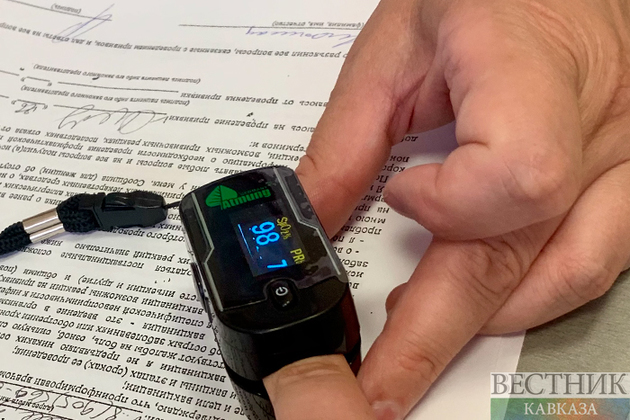Every day on the respiratory ward at one of Kyrgyzstan’s biggest hospitals, Aidai Temiraly Kyzy, a 24-year-old nurse, puts on the music and leads her patients in the Kara Jorgo, the national dance of the central Asian country. This involves a range of body movements and leaves everyone smiling – but Kyzy is not doing it for fun. The session is part of a treatment programme offered to people with severe chronic obstructive pulmonary disease (COPD) – a common, preventable and treatable lung condition, The Guardian writes.
“Almost all patients, before doing this, complain of shortness of breath, a cough and say they have no physical aptitude,” she says. “But, even on the second or third day, the improvement is noticeable. Physically, they can do more. “I’ve seen patients with really low mood transform and, by the end, they smile and are so grateful,” says Kyzy.
COPD develops from midlife onwards; symptoms include breathlessness, a chronic cough, often with phlegm, and tiredness. It is usually caused by smoking, but also by air pollution. There is no cure, and if left untreated it can lead to premature death. If detected early, it can be treated and managed.
It is one of the top three causes of death worldwide, and 90% of deaths occur in low- and middle-income countries. Globally, there are 3 million deaths a year from COPD but this number is expected to rise to 5.4 million by 2060, according to the latest report from the Global Initiative for Chronic Obstructive Lung Disease.
“In Kyrgyzstan, COPD is a very serious problem,” says Prof Talant Sooronbaev, director of the National Centre of Cardiology and Internal Medicine, located in Bishkek, the capital city. Although official figures put the prevalence at between 30,000 and 40,000 cases, he cites research that suggests up to 200,000 people, out of a population of about 6.5 million, have the disease.
“We have patients who don’t understand why they have a cough, or problems with breathlessness. They don’t visit health services and remain undiagnosed,” he says. The number of sufferers is expected to rise. Sooronbaev says the country has more than 500,000 smokers, and there is widespread indoor pollution caused by people in mountainous and remote regions heating their homes with wood, dung or coal during long and harsh winters.
Sooronbaev decided to act. Treatment for COPD in many countries involves prescribing oxygen, inhalers and antibiotics, which patients have to buy. In Kyrgyzstan this can cost more than a monthly salary. Sooronbaev and his team started experimenting with pulmonary rehabilitation, a physical exercise programme designed in 2016 for people with lung conditions, as part of an EU-funded research project called Fresh Air.
Over the years, the programme has evolved, and incorporated patient feedback. Now it is being adopted by Kyrgyzstan’s health ministry, and is already in place in three hospitals and two GP surgeries. It runs for six weeks, with a couple of two-hour sessions a week. Added to lectures, dietary information and patient support groups is a regime of physical exercise incorporating elements of volleyball – which is popular in Kyrgyzstan – walking, cycling on exercise bikes, and dance. The idea is that patients can continue with what they are taught afterwards at home.
Dr Azamat Akylbekov, a pulmonologist in Bishkek, has seen the transformative effect. “I remember one woman who was 63,” he says. “She cried because she had severe shortness of breath, coughed all the time, was dependent on oxygen, and took a lot of strong antibiotics and inhalers. She was really depressed.” She was invited to take part in the programme and the results surprised him. “Afterwards, she was like a flower – she smiled and her body language was more active. That sticks in my mind.”
Tokhorbek Makeshov, 48, works at an animal market and lives in a village in the Naryn region, 190 miles (300km) from Bishkek. He noticed his health deteriorating in 2015 but thought it was just a smoker’s cough. By 2016, he was coughing up phlegm and becoming increasingly breathless. His GP referred him to hospital in Bishkek where he stayed for 10 days and was diagnosed with COPD. The hospital later invited him to take part in the pulmonary rehabilitation programme, which at that time was still part of a research project. He says: “I didn’t believe it would work; I thought only inhalers or injections could help. But it was something new – I had nothing to lose. “It had a massive impact. The rehab didn’t cure me; I still cough and have flare-ups [of COPD] but I’m more active. I can walk more and do more around the house. I was surprised to see that such simple exercises could improve my respiratory health. My whole outlook changed.”
Sooronbaev wants pulmonary rehabilitation to be available throughout the country from this year. Patients who have undergone the programme are being trained to teach others, and Sooronbaev and colleagues are due to speak at medical conferences to inform other healthcare professionals about their progress with the programme. “When we give patients with COPD medicine and drugs, this is not a real medical service,” he says. “Pulmonary rehabilitation is an important part of treatment. This is why we have plans to extend, and why we will share our experience with neighbouring countries – Tajikistan, Uzbekistan, Kazakhstan and Turkmenistan.”






